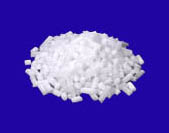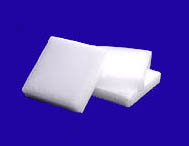If you order Dry Ice from Carbonics we will deliver it directly to your building, office, room or lab, into a container of your choosing, or one you can buy from us that is manufactured specifically for Dry Ice. Dry Ice requires careful handling and special containers to last as long as possible. We'll be happy to make sure you are set up optimally to get the most use possible from your dry ice.
Dry Ice is called "dry" because it does not have a liquid state. Most things that you think about freezing are a liquid, then as you freeze it that thing becomes a solid; like water, syrup, glass, rock, etc. Not so for dry ice! Dry Ice is Carbon Dioxide gas that has been either frozen or compressed into a solid form. If this piece of frozen (109 degrees Fahrenhei) Carbon Dioxide is in regular atmosphere (ie not compressed under tremendous pressure) as in sitting outside in the open, then as the CO2 "thaws" it turns directly into gas in a process called sublimation. Since under these conditions there is no liquid state we refer to this as dry ice. Since this dry ice is so cold, you cannot "store" it in a regular freezer, unless you have a freezer that can get cold than -109F! Your home freezer might get as cold as 0.0F (-18Celsius), but this is still like blasting the dry ice with air that is 109 degrees too hot for it! You'll melt ("sublimate") it very quickly!
The ideal way to store dry ice is in a very thick, sturdy container specifically made for dry ice. This container will likely NOT be airtight, but WILL be insulated very well. It's important that the container not form an airtight seal because as the dry ice inside continues to sublimate the solid form is turning directly into gas. Gas that takes up much more space than did the solid form, this creates increasing pressure which at room temperature may reach 800 PSI. A normal igloo style cooler will burst apart long before reaching that kind of pressure. This is why an actual dry ice specific container is designed to be able to release the pressure build up without taking any damage, or allowing the pressure to build very high. That DOES mean that there will be a constant "leakage" of CO2 gas coming out of that container so it should not be kept in a small enclosed space.







